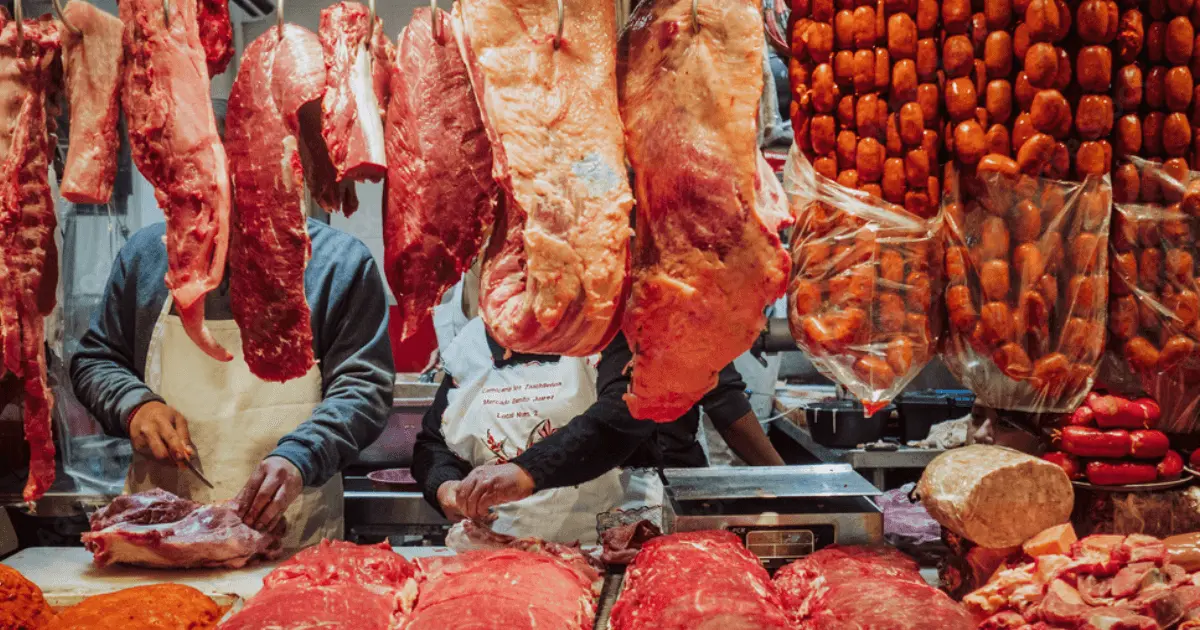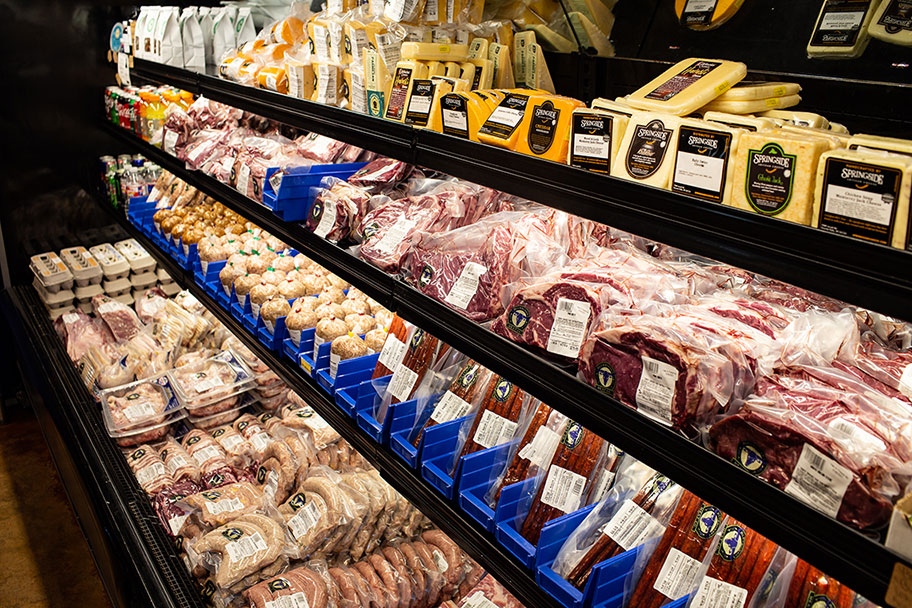Why Residents Love Bagley Farms Meat Market Edwardsville IL for Their Meat Purchasing
Why Residents Love Bagley Farms Meat Market Edwardsville IL for Their Meat Purchasing
Blog Article
Reveal the Art of the Butcher's Cut in a Modern Meat Market
In the ever-evolving landscape of contemporary meat markets, the butcher's cut has actually transcended its conventional roots, combining age-old craftsmanship with contemporary methods. bagley farms meat market edwardsville il. Today's butchers are not merely cpus of meat; they are experienced craftsmens that emphasize sustainability and honest sourcing. Their know-how in choose and preparing cuts customized to certain cooking demands supplies an unmatched eating experience. Yet, what truly sets the modern-day butcher apart is their capability to forge a deeper link in between consumers and the origins of their meat. How do these masters equilibrium practice with advancement, and what implications does this have for the future of meat intake?
Advancement of Butchery Techniques

The mid-20th century saw butchery methods even more refined by scientific insights right into muscle mass biology and meat aging, improving both inflammation and taste. Developments like vacuum product packaging and refrigeration extended item shelf-life, permitting butchers to branch out offerings and improve quality assurance. This period likewise marked the surge of customized equipment, such as band saws and meat slicers, which boosted precision and performance in meat handling.
The 21st century has presented digital modern technology into the butchery world. Digital systems now assist in tracking pet provenance and maximizing cuts to meet details client preferences. Additionally, a revival in artisanal butchery has actually emerged, blending traditional abilities with modern understanding to provide to consumers seeking moral and lasting meat choices. This advancement emphasizes a vibrant interaction in between custom and development, conference contemporary demands while protecting the craft's heritage.

Recognizing Meat Cuts

Comprehending the ins and outs of meat cuts is crucial for both butchers and consumers looking for high quality and worth. Each cut comes from a different part of the pet, imparting special tastes, textures, and cooking approaches. Mastery of these distinctions not just boosts cooking experiences yet likewise makes best use of the utility of each carcass. For butchers, accurate cuts reflect skill and respect for the craft, making sure marginal waste and optimum yield.
The main categories of meat cuts include primitive, sub-primal, and retail cuts. Primal cuts, such as the loin, rib, and chuck, are the huge sections initially separated from the carcass. Butchers then damage these down better into sub-primal cuts, prior to finally producing retail cuts offered to consumers, like ribeye or tenderloin. Each phase calls for careful focus to anatomical structure and muscle composition.
Understanding muscle make-up is vital; muscles made use of extra regularly by the animal often tend to be tougher and are best suited for slow food preparation approaches, while less-used muscular tissues, like those discovered in the loin, are more tender and perfect for grilling or roasting. Knowledge with these differences equips customers to make informed options, boosting their cooking endeavors.
Choosing High Quality Meat
Selecting the right meat includes even more than just picking an aesthetically attractive item from the display. The art of selecting quality meat needs a discerning eye and understanding of particular characteristics that signify quality and excellence.
Second of all, consider the marbling, which describes the white flecks of fat within the muscle mass. Appropriate marbling is a vital sign of tenderness and taste, as it melts during cooking, improving the meat's juiciness. Keep in mind, higher marbling usually correlates with exceptional quality cuts, such as USDA Prime.
Appearance is another critical factor; meat must really feel solid to the touch, not slimy or extremely soft. In addition, be mindful of the aroma. Fresh meat needs to have a clean, neutral scent, without any kind of sour or repulsive smells.
Coupling Cuts With Food Preparation Techniques
Effectively pairing cuts of meat with the appropriate food preparation methods is necessary for achieving ideal flavor and structure. Different cuts vary in tenderness, marbling, and connective cells content, each calling for certain strategies to open their potential. For circumstances, tender cuts like filet mignon and ribeye, with their intrinsic marbling, advantage from high-heat, quick-cooking techniques such as barbecuing or pan-searing. These techniques improve the meat's all-natural tastes and guarantee a juicy surface.
Alternatively, harder cuts like brisket and chuck roast are rich in collagen, which breaks down into gelatin when cooked slowly. These cuts are ideal for braising or slow roasting, permitting the meat to soften in time and create deep, complicated tastes. Clicking Here Cuts such as short ribs and pork shoulder fare well with slow-cooking approaches, where extended cooking times change their durable appearances right into succulent meals.
Lamb shanks and oxtail, which call for extended food preparation to tenderize, are excellent prospects for cooking or sluggish simmering. These methods coax out rich, hearty flavors while keeping moisture. By comprehending the one-of-a-kind qualities of each cut, cooks and home cooks alike can elevate their culinary productions, making certain each meal is both pleasing and memorable.
The Butcher's Role Today
Navigating the evolving landscape of the modern meat market, the butcher's role today expands past go to this web-site simple preparation of cuts. Contemporary butchers are culinary craftsmens, educators, and advocates for lasting techniques.
Along with crafting precise cuts, butchers currently involve directly with customers, supplying cooking guidance and tailoring choices to fit specific requirements and choices. Their expertise in meat aging, marbling, and taste profiles encourages customers to make enlightened decisions, boosting their culinary experiences. This personalized solution exhibits the butcher's progressing role as a trusted expert in the cooking area.
Additionally, butchers are crucial in lessening waste, making use of whole pets to create varied products such as sausages and supplies - bagley farms meat market edwardsville il. This detailed strategy not just respects the animal but also aligns with contemporary sustainability goals. In this method, the contemporary butcher personifies both custom find here and technology, adapting to an ever-changing market while preserving the virtuosity and honesty of their craft

Conclusion
The contemporary butcher's craft delicately weaves typical techniques with modern-day advancements, emphasizing lasting techniques and honest sourcing. Proficiency in comprehending diverse meat cuts and high quality signs equips butchers to offer educated referrals, aligning specific cuts with optimal food preparation techniques. This proficiency not only boosts culinary experiences yet also strengthens the connection in between consumers and the beginnings of their food. By honoring historical methods while welcoming contemporary needs, the butcher's duty stays essential in today's sophisticated meat market.
Report this page